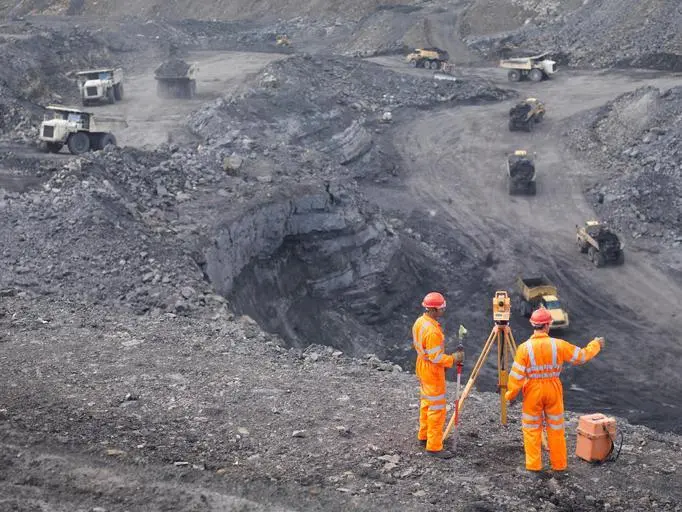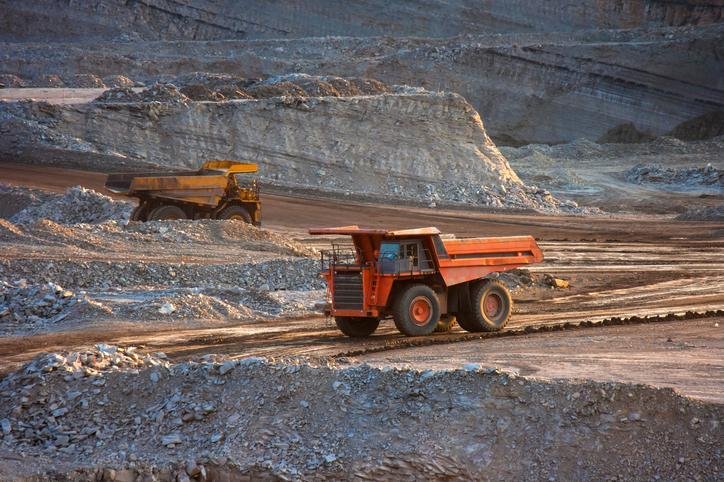Saudi Arabia mining reforms are transforming the Kingdom into a global mining powerhouse, attracting an impressive $32 billion in new investments. These ambitious changes are part of the country’s Vision 2030 plan, which aims to diversify the economy away from oil and create new sources of growth and jobs.
With abundant mineral resources still largely untapped, Saudi Arabia is now positioning itself as a major player in the global mining industry. But what exactly are these reforms, and how have they sparked such a massive wave of investment? Let’s dive deeper.
A new era for Saudi Arabia’s mining sector
The mining sector has long been seen as an underdeveloped part of Saudi Arabia’s economy, despite the Kingdom holding rich deposits of gold, copper, phosphates, bauxite, and rare earth minerals.

Until recently, complicated regulations, lack of infrastructure, and limited private sector participation prevented the industry from reaching its full potential.
Recognizing this, Saudi Arabia launched comprehensive mining reforms in 2020. These included a new mining law designed to simplify licensing, encourage private investment, and promote sustainability.

The government’s aim is clear: make mining the third pillar of the national industry, alongside oil and petrochemicals.
Key highlights of Saudi Arabia mining reforms
The reforms introduced several groundbreaking measures:
• Streamlined licensing process: The new mining law made it easier and faster for local and international investors to obtain exploration and mining licenses. This removed one of the biggest hurdles to private investment.
• Financial incentives: Tax breaks, customs duty exemptions, and funding support have made it more attractive for companies to set up operations.
• Infrastructure development: The government invested heavily in roads, railways, and ports to connect mining sites to export hubs. This reduced logistics costs and increased operational efficiency.
• Environmental and social standards: New rules ensure that mining activities align with environmental protection and community development, which makes projects more sustainable and globally competitive.
• Digital transformation: Technology adoption and digital solutions have been promoted to improve exploration, safety, and efficiency.
These forward-looking policies have turned Saudi Arabia into a promising destination for mining investors worldwide.
$32 billion investment wave: What does it mean?
According to a recent report, these mining reforms have attracted $32 billion in confirmed investments. This massive capital inflow is expected to transform not just the mining sector, but also related industries such as logistics, manufacturing, and services.
Who is investing?
The Kingdom has attracted major international mining companies as well as local players. Some notable examples include:
• Ma’aden, Saudi Arabia’s largest mining company, which is investing billions in gold, phosphate, and aluminum projects.
• Barrick Gold, partnering with Ma’aden on gold mining ventures.
• Various Chinese and Australian firms looking at rare earth minerals and battery metals crucial for green technologies.
These investments signal confidence in the Kingdom’s mining potential and regulatory stability.
Economic impact beyond mining
The $32 billion investments will have a ripple effect on the Saudi economy.
Job creation: It is estimated that tens of thousands of direct and indirect jobs will be created, supporting the country’s push to reduce unemployment and empower local talent.
Boost to non-oil GDP: Mining could contribute up to $75 billion to Saudi Arabia’s GDP by 2035, helping diversify income sources.
Development of local industries: As mining grows, so will downstream industries such as metal processing, equipment manufacturing, and chemical production.
Technology transfer and innovation: Foreign partnerships encourage knowledge transfer, helping Saudi companies adopt best practices and advanced technologies.

Supporting Vision 2030 goals
Vision 2030, Saudi Arabia’s ambitious national transformation plan, aims to reduce dependence on oil exports and build a sustainable, diverse economy. Mining is seen as a strategic sector to achieve this vision.
The mining reforms perfectly align with Vision 2030’s objectives.
Economic diversification: Expanding beyond oil to minerals helps stabilize the economy against oil price volatility.
Private sector growth: By attracting private investors, the Kingdom can reduce the burden on government spending.
Sustainability: New environmental guidelines ensure mining does not harm ecosystems or communities, supporting the vision’s sustainability pillar.
Challenges and risks
Despite the strong momentum, there are still challenges.
Global commodity price volatility: Mining is highly sensitive to price fluctuations, which can affect profitability and investment decisions.
Environmental concerns: Although regulations exist, proper enforcement and monitoring are critical to avoid environmental damage.
Skilled workforce availability: Developing enough local talent to support large-scale mining operations remains a challenge.
Saudi Arabia will need to continue refining its policies and investing in education and training to overcome these hurdles.
The global context: Why is Saudi Arabia’s mining push important?
The global transition to green energy is driving demand for minerals like copper, nickel, and rare earth elements. These are essential for batteries, electric vehicles, wind turbines, and solar panels.
Saudi Arabia’s move to become a major supplier of these critical minerals gives it a strategic advantage. It also supports global efforts to secure more diversified and stable mineral supply chains, reducing dependence on a few dominant suppliers.
Future prospects for Saudi Arabia mining reforms
The momentum created by the current $32 billion investments is just the beginning. Saudi Arabia’s Ministry of Industry and Mineral Resources has announced plans to attract up to $170 billion in total mining investments by 2030.
Future plans include more exploration projects, mapping the Kingdom’s mineral wealth in detail to identify new mining opportunities.
Sustainable mining cities: Developing integrated mining hubs with industrial zones, housing, and services to support communities.
Downstream industries: Expanding into mineral processing and value-added manufacturing to capture more value locally.
The government is also looking at partnerships with technology firms to use advanced exploration techniques, including artificial intelligence and drones, to unlock new deposits.

Voices from the industry
Industry leaders have expressed strong support for the reforms. Robert Wilt, CEO of Ma’aden, said, “Saudi Arabia’s mining reforms have created a dynamic and investor-friendly environment. We see great potential for growth and global competitiveness.”
International analysts also see Saudi Arabia as a rising star in mining. A recent report by BMI Research highlighted the Kingdom’s robust policy framework and long-term strategic vision as key factors driving investor interest.
Conclusion: A golden opportunity
Saudi Arabia mining reforms are not just policy changes; they represent a bold vision to reshape the Kingdom’s future. With $32 billion in investments already secured and much more on the horizon, Saudi Arabia is on its way to becoming one of the world’s most important mining hubs.
These reforms are creating jobs, diversifying the economy, supporting global green energy goals, and positioning the country as a leader in sustainable mining.
As the Kingdom continues to open up and modernize its industries, the mining sector stands out as a shining example of what strategic reform and clear vision can achieve.
Saudi Arabia mining reforms have turned potential into reality, and the world is taking notice.
Do follow UAE Stories on Instagram
Read More: UK recalls Dubai chocolate bars over peanut allergen risk














